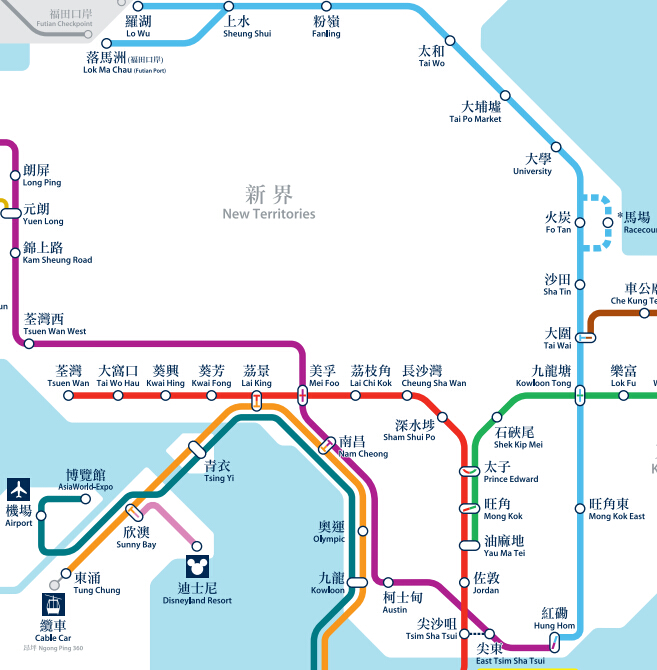
Each one is a contactless credit-card sized card that you hold at a reader until it goes “beep”. Three basic types of ticket are available. Turnstiles take contactless cards which you can buy in any station. At the end of your journey, you will go through another turnstile and be outside the system, though still inside the station building. For some city routes, a bus would get you a more interesting experience, while some destinations are best reached via one of Hong Kong’s iconic red taxis.Įvery MTR station has a set of turnstiles you need to go through in order to reach the platforms, once you have gone through the turnstiles you are in the “paid area” and MTR rules apply, such as no eating and drinking. A few do provide great views though and those are highlighted below. Visitors to Hong Kong will find that many, though not all, of the places on their list of attractions and sightseeing destinations, can be reached easily with the MTR.Īt the same time, the MTR is not always the best way overall for a tourist to navigate around Hong Kong, for one thing, there is no view on the majority of lines. The MTR is a great way to get to a variety of different parts of Hong Kong, it is fast, cheap, clean and never gets stuck in traffic. The HK MTR is no exception, but if you follow this guide you’ll be using the system like an old-hand in no time! Each city system has its own quirks and these are often not explained well by locals, for who it is all “obvious”. It also is more reliable than the similarly aged MRT in Singapore, and that is according to Singaporeans!įor visitors or new arrivers in a city, the public transport system is always a challenge. Even during off-peak times, most lines run at 5-minute intervals so you are rarely waiting on a platform, which is a good thing as the majority have little or no seating for people waiting!Īs one of the newer underground railways it is clean, modern and spacious and a lot easier to navigate than one of the historic ones such as the London Underground, Paris Metro or the New York Subway. It is truly impressive to see a train leave as you enter the concourse, then by the time you have walked across to the platform find another train already arriving. To me this a good example of successful off-line onboarding.During rush-hour trains on the busiest lines depart every two minutes. The design turns out to be really efficient because the first time users simply can check the basics, but a the same time the advanced users get a lot of additional information. When looking at the map I realised that the map displays more information than I initially noticed. When the transfer is right across the other side of the platform the map lights up the connecting line and the direction it’s travelling. Some metro-lines cross each other at multiple stations, so therefor the system is optimised to make the transfer to another line smooth and efficient. The lighting in the map is used to visualise the tube system and directs you to best transfer options.

Not only does it show you where the train currently is and where the next stops are, the infographic contains even more information for the advanced user… The map is positioned above every exit in the train cars and supplies you with more information than you realised the first time you saw it. It’s a simple and logic visualization and it can tell you exactly what you need to know “is this the right train?”, and “do I need to get off this stop?”.Īfter some traveling, you get more familiar with the city and when you take the subway, you have some more time to look around and notice how smart the MTR map-design is. The first time you enter the train, you take a look at the map and it easily guides you to the places you want to go.

The underground in Hong Kong is really great! It’s fast, efficient and I especially like the dynamic maps that are installed in the metro trains.


 0 kommentar(er)
0 kommentar(er)
